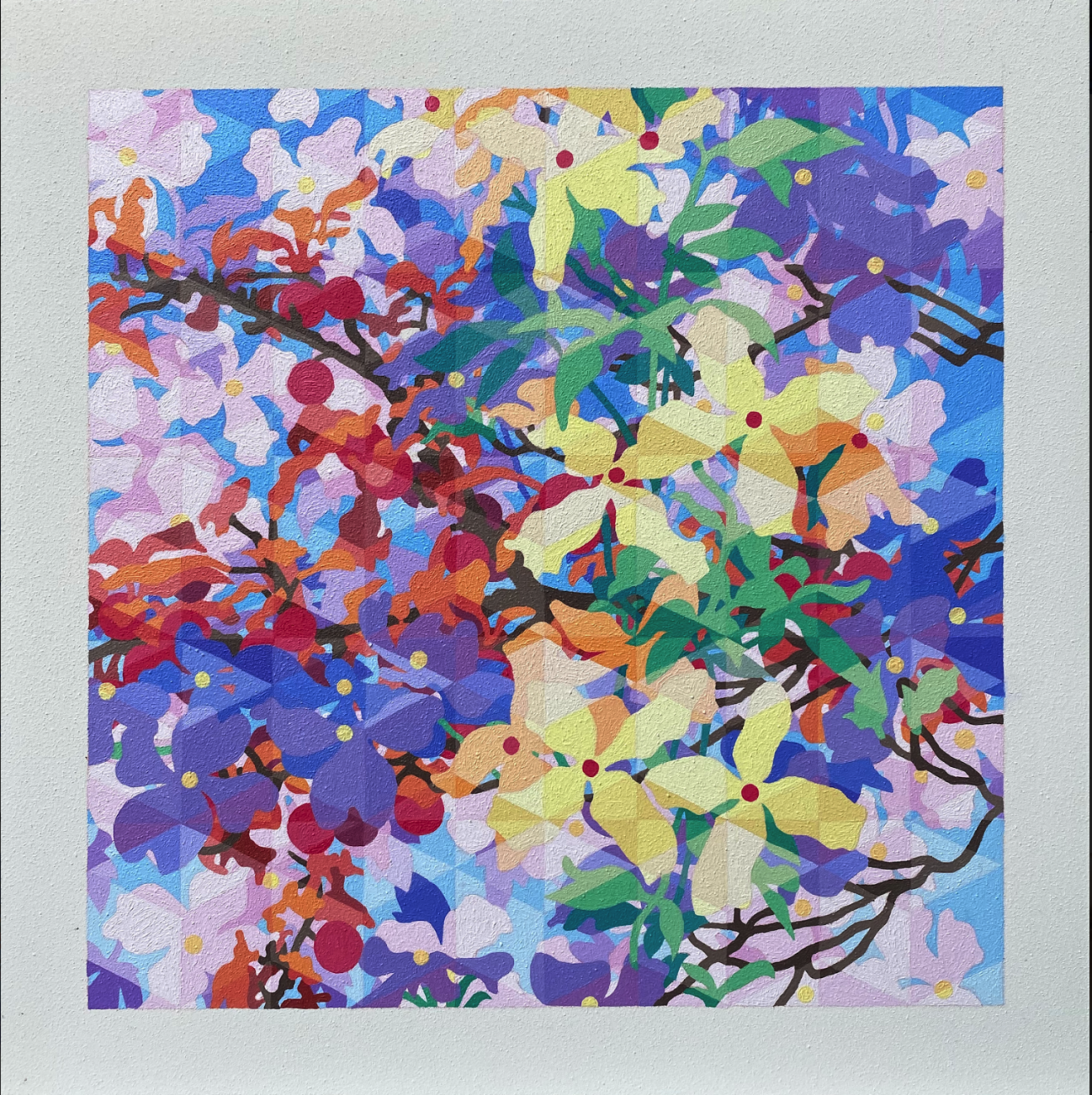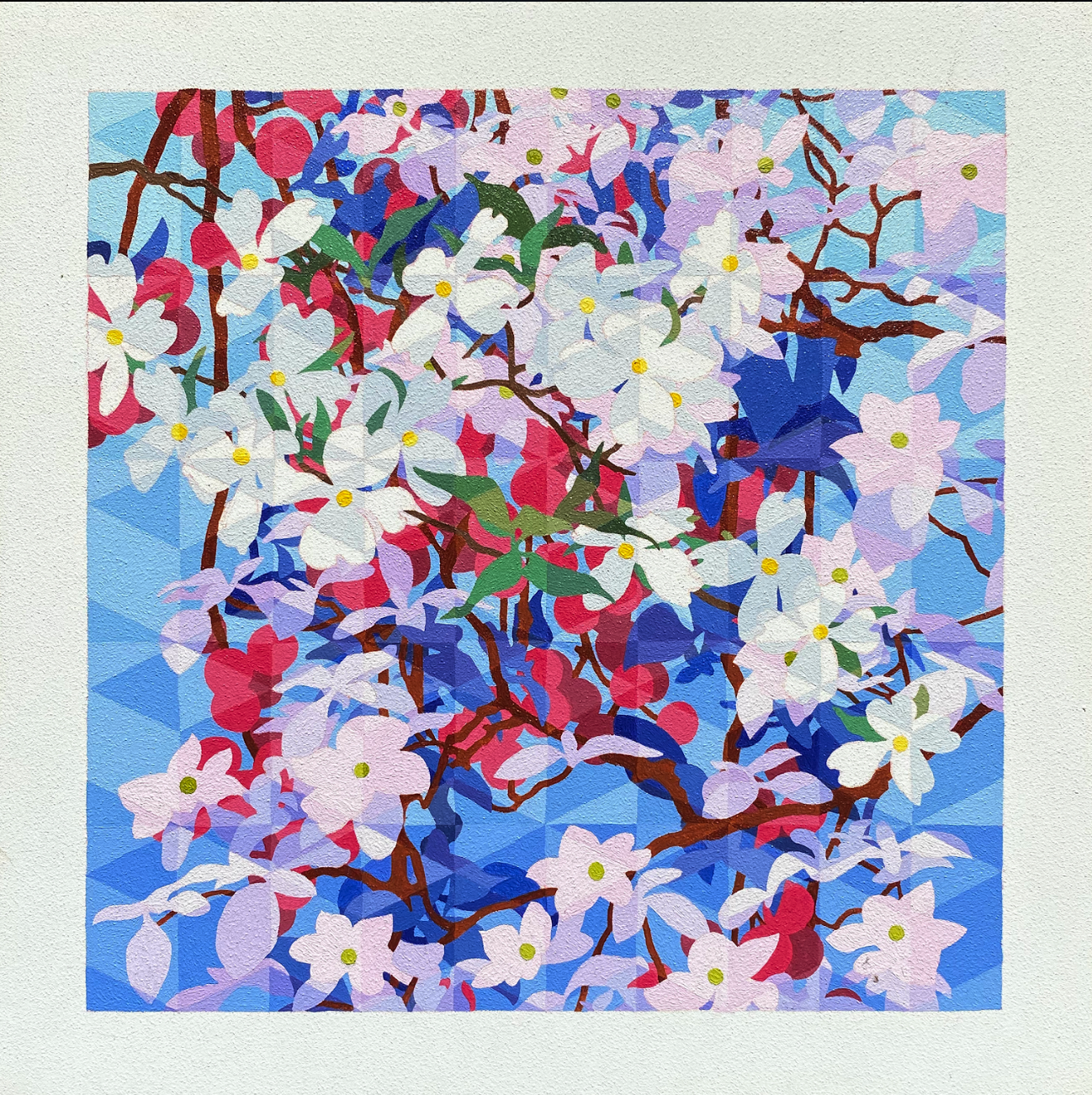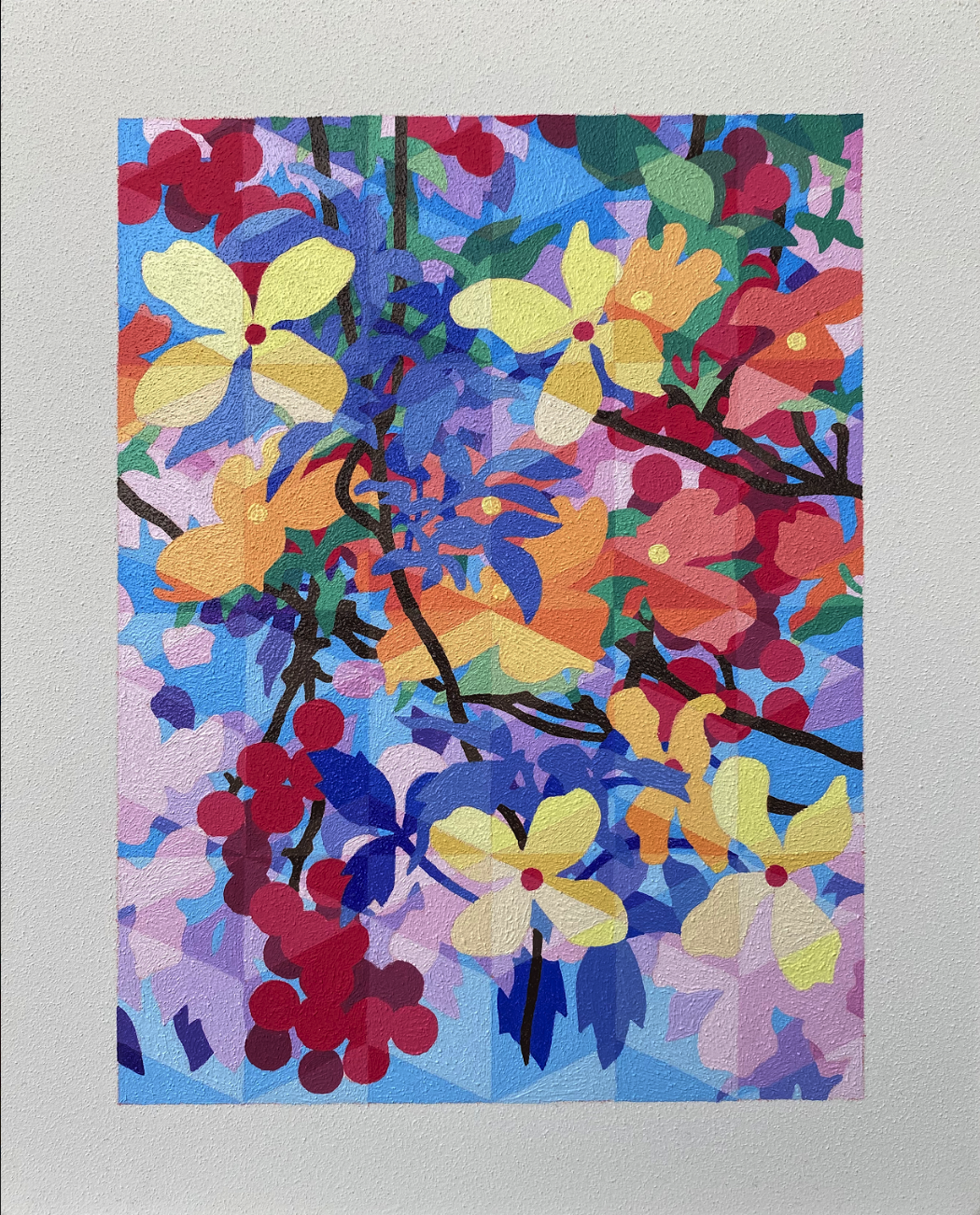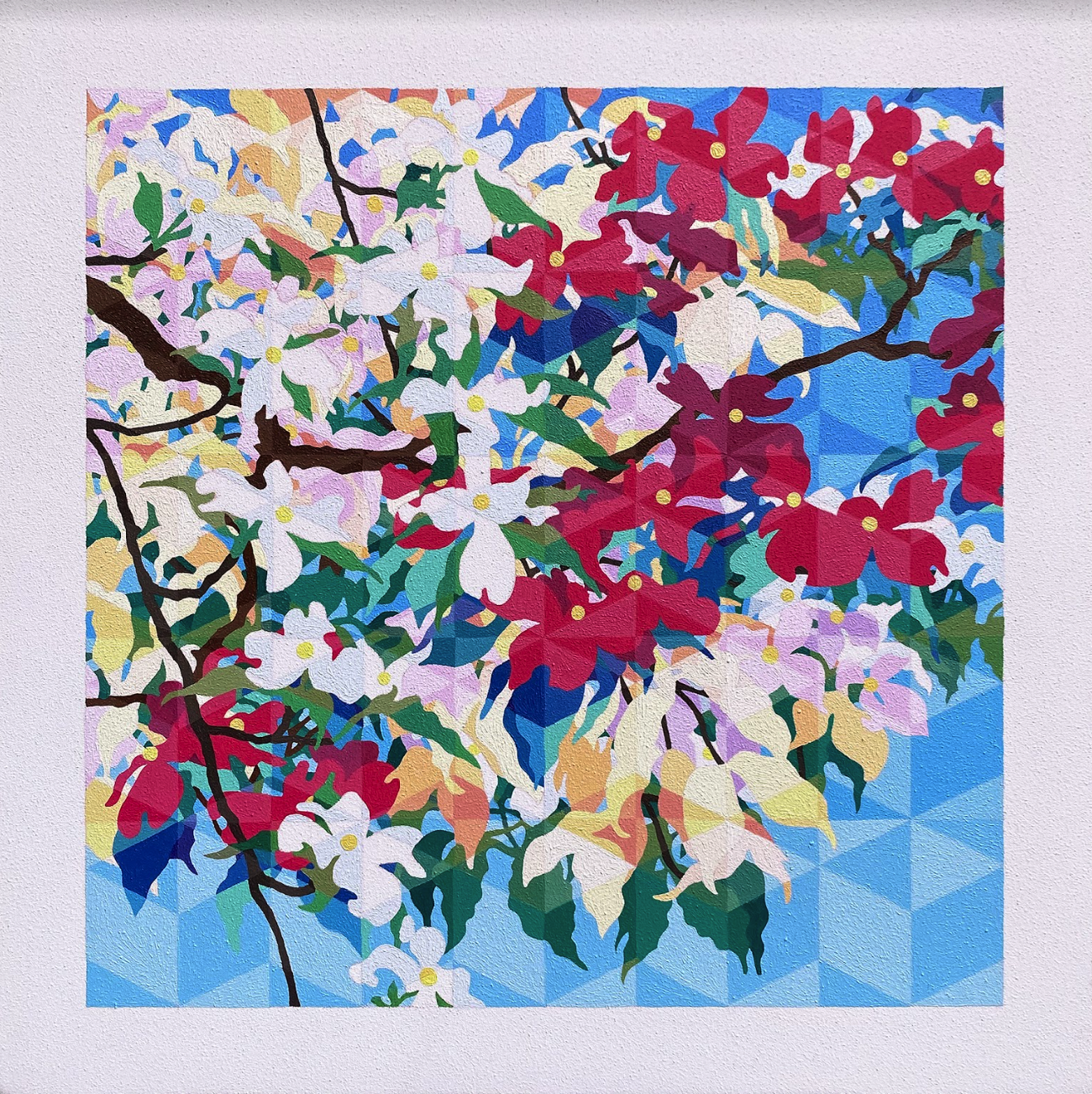10 Questions with Durim Loshaj
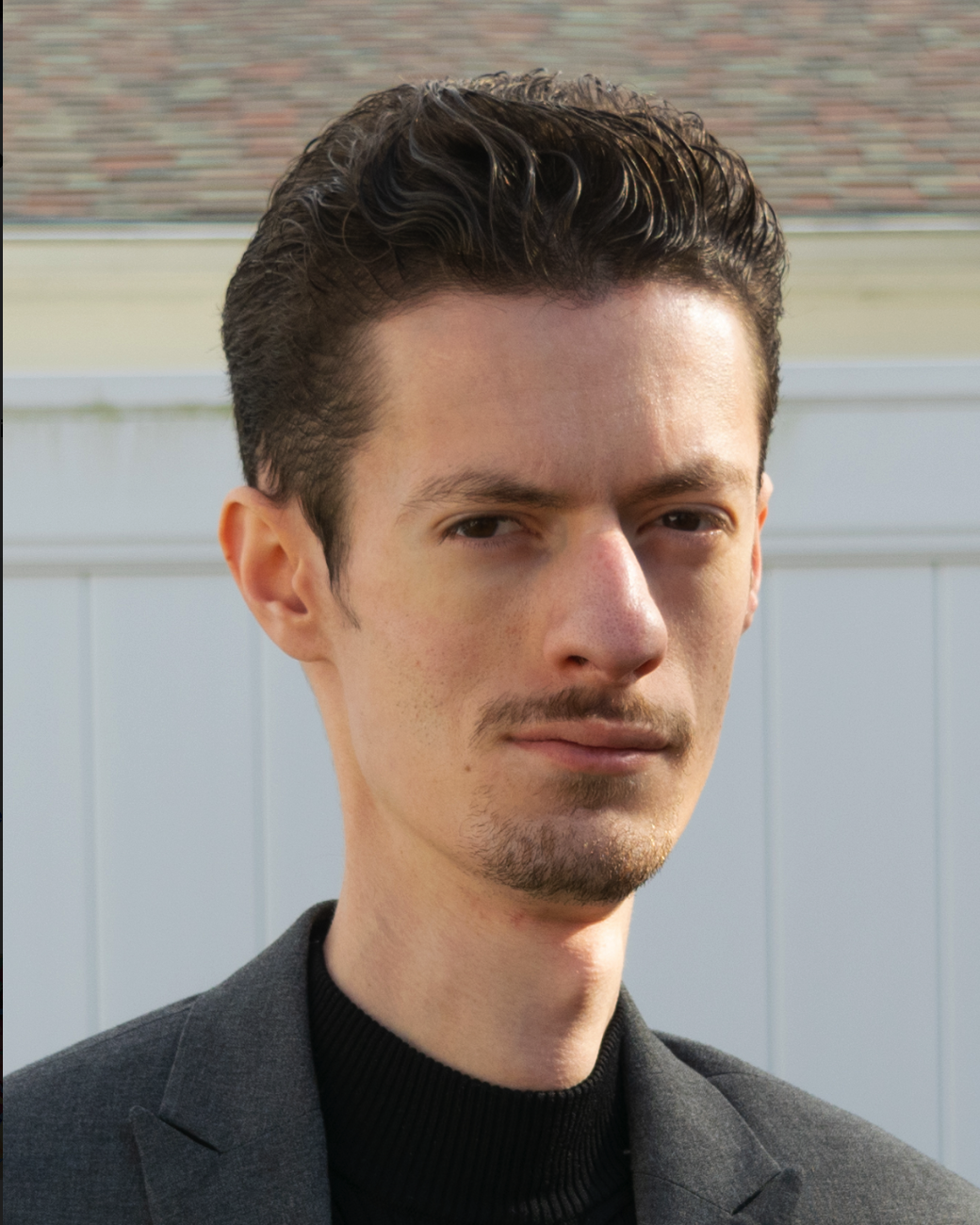
Durim Loshaj
-written by Nat Richmond
Originally from Kosovo, Durim Loshaj immigrated to the United States at the tender age of 8. Since then, he's immersed himself in the culture of his new home and integrated his love for Art into digital and oil painting mediums where he transfers his ideas to life. He's found his own unique lane after being inspired by a relative to try painting, and it has since paid off for him. In this interview, I had the opportunity to discuss his creative process with him, understanding why he approaches his works the way he does. Durim gave me some amazing background insights regarding Islamic and Japanese Art, which are two art forms that influence his work.
Describe your early years. What did you witness growing up that inspired you to express yourself as an artist?
I don’t remember when I started drawing but if I had to guess I would say 3 or 4 years old. It’s not uncommon for kids to draw but some have more of a passion for it. I just enjoyed it a lot and was encouraged to keep doing it.
We're there any artists in your immediate environment or from your place of origin that had an impact on the way you seen the world?
The first artist that I knew was my older cousin Bashkim. He was the first example I saw and said “Okay, I guess it is possible to become an artist”. I was amazed by his painting whenever we would visit him. At a young age any inspiration is helpful in pushing you toward your goal.
What was your first work? How long did it take for you to create?
Well, that would depend on what we consider a work. Is it a drawing or a painting? Because I didn't begin painting until I was maybe 20. Before that my main medium was pencil and paper. I drew what I saw the most, which was cartoons, superhero logos, sports teams, anything that was design/art related I copied. At that time I wasn’t as regimented as I am now, those years were just the practice years laying down the groundwork for the future.
When you first came to the United States, how did this environment differ from the one you came from?
I came to America from Kosovo when I was 8 years old as a refugee because of the Kosovo War. When I came here everything was new, the country, the language, the culture and so on. I think what helped me adjust to the new environment was being young. You’re more open to new experiences so it wasn’t hard to learn a new language, it took maybe 6 months to a year to get a basic grasp of the langage.
Culturally and creatively, did this new environment inspire you or stifle you?
I think I was determined to become an artist regardless of my circumstances. America is rich with culture and there’s so much inspiration to draw from. For example, I was in ESL classes that’s English Second Language. These classes were full of kids from other countries, most of these kids were refugees like me so we shared a similar experience with different perspectives. I had a friend from almost every continent and I learned that no matter where you’re from we all have things in common. This is why I don’t limit my art to just Albanian art. I’m inspired by many cultures outside my own because I see similarities among them all. These similarities are geometric patterns accompanied by nature designs. I see them in Aztec art, Islamic art, African art. Almost every culture has some geometric design they create. This is why I try to make my art universal. Everyone can relate to it.
What are your artistic goals for the near future?
I want to make my paintings more vibrant and colorful because it’s a visual medium and color in my opinion is the most important element of art. I also make digital art and people ask me about it, they say “ you should do NFT’s” and I reply “No, I don’t want to”. I believe people prefer a physical painting over a digital one. The reason why I believe this to be true is because you can see the texture and brush strokes in a painting. The human touch is evident which is why I show people my painting process on instagram. Now, I’m not against NFT’s but I’m not interested in it at the moment, I’ll leave that door open for another day. Another goal I have is collaborating more with my younger brother Kushtrim. He’s really good at music and using After Effects. We collaborated on a few art pieces and they turned out great. He knows my art very well so our brainstorming sessions are very productive and creative.
What has been your most challenging work to date and why?
Without being too specific I think the most challenging art pieces are the larger paintings I make. The reason they're difficult is because of how long they take to complete and how tedious it is. I’m very detail oriented so I’ve learned to enjoy the process even the parts I don’t like. Once it’s finished it’s on to the next. If you develop the habit of rushing to the next painting you’ll miss the whole point of being in the moment. One day down the road there won’t be another painting, one of them has to be the last so there’s no need to rush on to the next.
How important is it to express the culture from which you came in your Art?
It's important if that's the focus. I don't think my focus is on my culture even though I'm influenced by it. My culture is a mix of Albanian and Islamic. This is where I get the geometric designs from. But I’m also inspired by Japanese art because they capture the essence of nature and the art is very detail oriented. I’ve learned that you don’t have to take everything from your inspiration, for example. Japanese art tends to leave a lot of open space in the composition. I like to fill in the canvas as much as possible, leaving only some space open. In islamic art you can depict plants but you’re not supposed to depict animals because they’re God’s creation but apparently plants aren’t? I never agreed to that rule so I don’t follow it. I pick and choose what I like and try to add my own ideas as well to create something new but familiar. This comes back full circle to the importance of being open to other cultures. It has definitely shaped my art and worldview for the better.
Do you feel like Art can successfully preserve culture, dialect, and other important components of a country?
Yes, because art is already an important element in culture. Art is one of the oldest forms of communication/language. I was reading about these cave paintings in Spain that are almost 50,000 years old and all I could see was the human element. Art is more than a career or occupation, it’s ingrained in us and history shows us many examples of human expression. I’m just carrying on tradition.
Any final thoughts?


